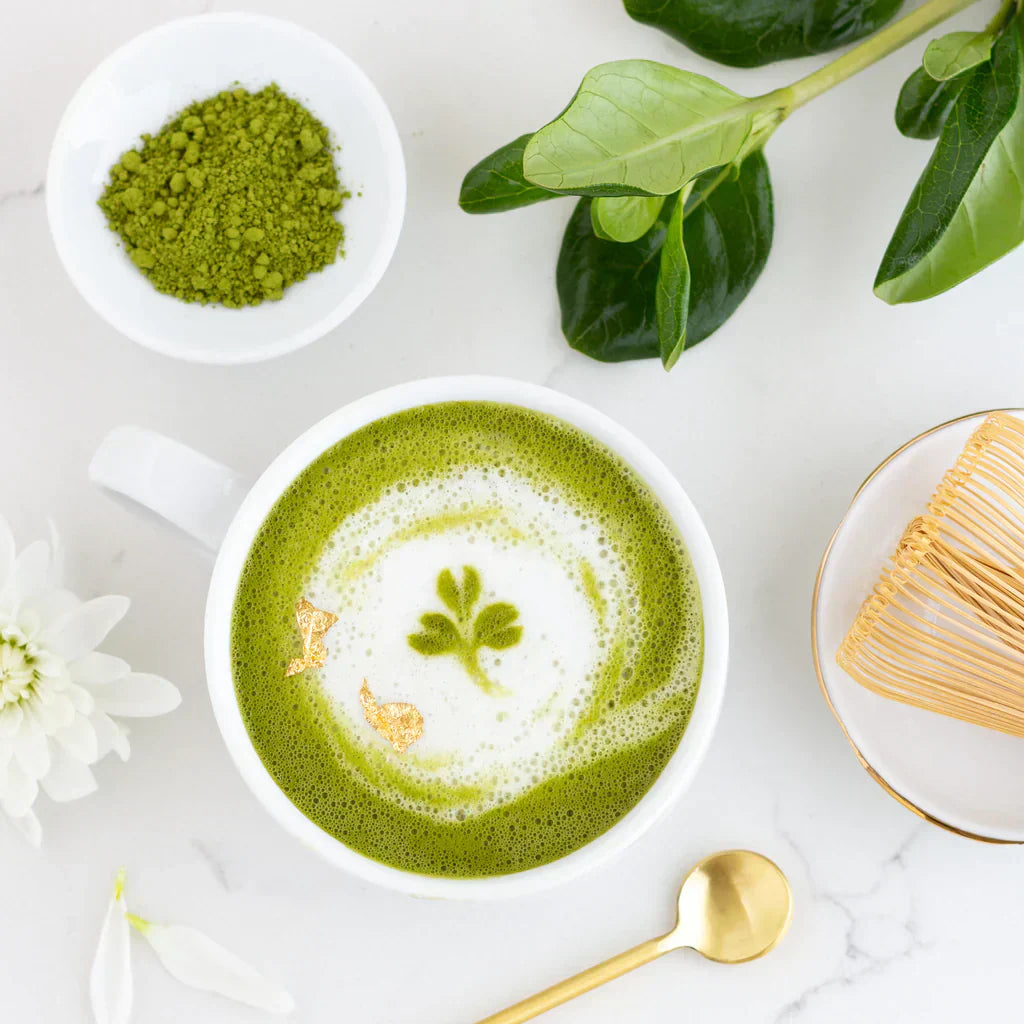
Choosing The Right Sugar Levels: Tea vs. Latte
Share
When it comes to matcha, one size does not fit all, especially when it comes to how you enjoy it! The sugar level in matcha can drastically affect its taste, and it’s important to understand the difference between drinking matcha as a traditional tea and preparing it as a creamy, frothy latte.
1. Matcha as a Tea: The Traditional Experience
- What to Expect: When you prepare matcha as a traditional tea, you're drinking the pure, unadulterated form of matcha. This experience highlights the natural, earthy, slightly bitter taste of matcha. The bitterness comes from the catechins (antioxidants) in the matcha, which can be sharp for those new to it.
- Sugar Level: Traditional matcha tea is typically consumed without any added sugar, allowing the natural flavor to shine through. However, some people prefer to add a small amount of sugar to balance the bitterness.
- Why It's Important to Know: If you’re new to matcha or prefer a milder, sweeter flavor, drinking pure matcha tea might not be ideal unless you're accustomed to its bitterness. But for matcha purists, this is the authentic way to experience it.
2. Matcha in a Latte: A Creamy, Sweetened Delight
- What to Expect: Matcha lattes are a popular choice for those looking for a smoother, sweeter flavor. The combination of matcha with steamed milk (or plant-based milk) creates a creamy texture that softens the natural bitterness of the matcha, making it more approachable for those who might find plain matcha tea too strong or bitter.
- Sugar Level: Many matcha lattes are sweetened with sugar to complement the matcha. The sweetness level can vary, but it’s typically added to create a pleasant contrast to the earthy taste of matcha.
- Why It's Important to Know: If you're looking to make a matcha latte, you’ll want to choose a matcha with a sweeter flavor profile or one that balances well with milk and sugar. Some matcha powders designed for lattes are formulated to be less bitter, providing a smoother taste when combined with sugar and creaminess.
3. Choosing the Right Matcha for Your Preference
- For Tea Lovers: If you’re a tea enthusiast who loves the boldness and complexity of natural, unsweetened flavors, choose a ceremonial grade matcha. These are typically less bitter and offer a smooth, vibrant green color.
- For Latte Lovers: If you're preparing a matcha latte and prefer a sweeter, creamier experience, opt for a premium or culinary grade matcha. These matchas are often less bitter and blend well with milk and sugar. You may also want to consider matcha specifically labeled for lattes, which is often formulated for the best balance of flavor in a milk-based drink.
4. How to Adjust Sugar Levels
- For Tea: If you find your matcha tea too bitter, try adding just a small amount of sugar to sweeten it. Start with a little and adjust based on your taste to ensure it’s not overly sweet.
- For Lattes: If you're making a matcha latte at home, start with a small amount of sugar and adjust based on your taste. Add more if you prefer a sweeter drink, but remember that balance is key.
Conclusion
Understanding the sugar level in matcha is essential for creating the best matcha experience, whether you're sipping it traditionally as a tea or enjoying it as a latte. By knowing how to adjust the sugar level and which matcha grade to choose, you can ensure your matcha drink is tailored to your taste, creating a much more enjoyable and satisfying experience.